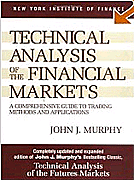James Turk: Silver is Approaching Stage Two of its Bull Market
Back in April 2007, I wrote about the three stages that appear in every bull market, and more to the point, that gold was approaching the end of stage one. Gold back then was still trading around $690, and therefore well below its then record high of $850 reached in January 1980. My view was that “gold looks ready to make a new all-time high. When that happens, stage two begins. There will not yet be widespread excitement about gold in the next stage, because that won't occur until stage three. But when gold makes a new record high, and particularly after it breaks into a 4-digit price, people will begin paying attention.”
I wrote a follow-up article in November 2009 entitled Welcome to Stage Two of Gold's Bull Market, just two months after gold broke above $1,000. Focusing on the change in prevailing sentiment, I noted how differently gold was being treated. "During the first stage of a bull market, the media and most investors alike focus on past issues, rather than future potential. Over the past decade one consequently heard all the reasons not to own the gold…But there is a notable difference in this stage compared to stage one. Look how many people are writing and talking about gold. Gold has moved from apathy and neglect – stage one characteristics – to growing attention. But importantly, instead of embracing gold and analyzing it to determine relative value, today’s attention is one of widespread disbelief and skepticism that gold can climb higher. These are exactly the responses one should expect to emanate from stage two." I concluded by noting that at some unpredictable point in the future, gold will enter stage three "when gold no longer is relatively good value."
I did not make any mention of silver in the above two articles. It too has three stages, but silver is still mired in stage one, which began in February 1991 after silver had collapsed to $3.50. It was an astounding 93% decline from its January 1980 peak of $50. But as we can see on the following chart, $3.50 was silver’s low, and its price has been rising ever since.

This chart shows a massive accumulation pattern, marked by the green lines. This pattern is a story of strong hands and weak hands, specifically, of silver moving to the former from the latter.
From its $50 high in January 1980 to its $3.50 low in February 1991, the weak hands were shaken out. At that point, the accumulation by strong hands – who were buying because the recognized that silver was an exceptional bargain – became the dominant force. Their buying power was stronger than the selling pressure of the weak hands, and the price of silver responded by starting to climb. It was classic stage one action, but here’s the important point.
Silver is still in stage one. It won’t advance into stage two until $50 is exceeded, just like gold did not enter stage two until its previous high of $850 was hurdled.
I expect that silver will exceed $50 this year, which is a point of view I first mentioned in my outlook for 2010.
Admittedly, I was a little early with my forecast about when gold would enter stage two. So perhaps I will again be early by forecasting that silver will enter stage two of its bull market this year. Regardless of the accuracy of my timing, one thing is clear. Because it is still in stage one, silver remains good value.
Labels: James Turk, silver















![[Most Recent Quotes from www.kitco.com] [Most Recent Quotes from www.kitco.com]](http://www.kitco.com/images/live/t24_au_en_usoz_6.gif)
![[Most Recent Quotes from www.kitco.com] [Most Recent Quotes from www.kitco.com]](http://www.kitco.com/images/live/au_go_0030_ny.gif)
![[Most Recent Quotes from www.kitco.com] [Most Recent Quotes from www.kitco.com]](http://www.kitco.com/images/live/au_go_0365_ny.gif)
![[Most Recent Quotes from www.kitco.com] [Most Recent Quotes from www.kitco.com]](http://kitconet.com/charts/metals/silver/t24_ag_en_usoz_4.gif)

















0 ΣΧΟΛΙΑ (COMMENTS):
Post a Comment
<< Home